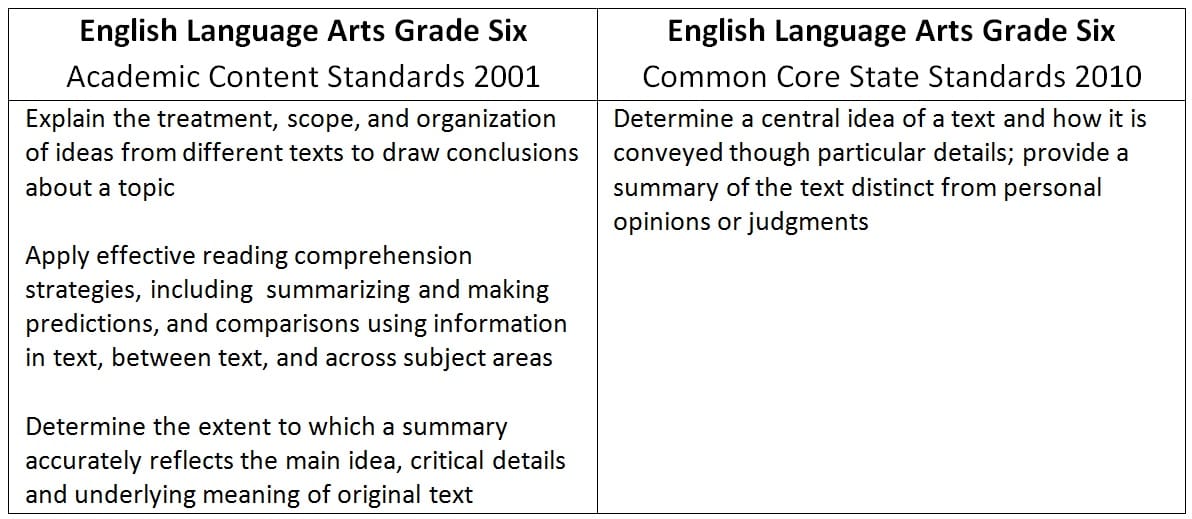In a Senate hearing on February 20, the Acting Superintendent of Public Instruction Michael Sawyers presented progress the Ohio Department of Education (ODE) has made in the past six months on various initiatives. In what he deemed a “crash course,” Sawyers shared the changes being made to the state and district report cards distributed to schools, assessments required for students, and evaluations given to teachers. The superintendent seemed optimistic about the changes related to the Common Core. Sawyers, moreover, paid special attention to the introduction of new Common Core learning standards which he believes will “put the art back into teaching.”
In response to No Child Left Behind, passed in 2001, ODE was required to write academic standards that required teachers to follow specific guidelines. Sawyers then compared the 2001 standards against the new Common Core standards.
 SOURCE: Michael Sawyers, “Education Reform Update: Presented to the Senate Education Committee,” PowerPoint presentation, February 20, 2013.
SOURCE: Michael Sawyers, “Education Reform Update: Presented to the Senate Education Committee,” PowerPoint presentation, February 20, 2013.
Sawyers explained that changing the language allows the Common Core standards to be “fewer, deeper, and clearer.” By wrapping these standards into clusters, teachers are able to creatively unpack what lessons they can teach their students, bucking the checklist of requirements that they had to consider before the Common Core. The new standards also ask the students to delve deeper into material, providing teachers the opportunity to create instruction that digs into the nuances of academic content.
Currently, ODE is piloting the new set of standards in a few school districts in the state and providing professional development for teachers and administrators. By the 2013-2014 academic year, ODE plans to have all Ohio schools aligned with the Common Core standards. Sawyers reports that teachers are excited about the potential changes but are weary about having their students tested against the old standards which will phase out in 2013-2014. In response to this concern, ODE is working to ensure that testing next year will be aligned with the impending changes in standards. While the Common Core may cause short term growing pains, the outlook looks bright for teachers seeking to implement creative classroom instruction and the students who will benefit from the changes in their curriculum.
